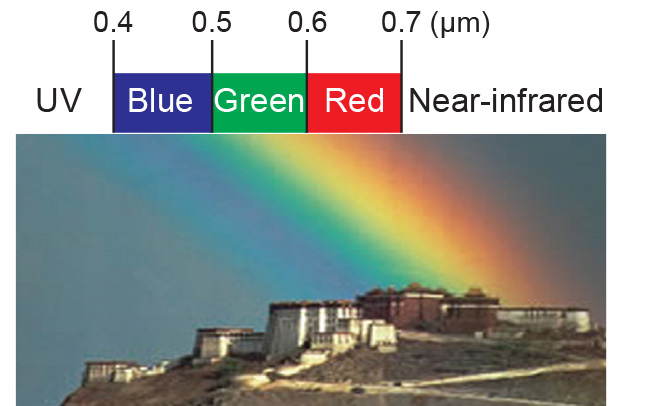Wavelength and frequency
Wavelength is the distance between two successive maxima of a periodic wave (in space); mostly stated in μm or nm. Frequency is the reciprocal of the wave period.
Introduction
The wavelength is a differentiating property of the various types of EM radiation and is usually measured in micrometres (1 μm = 10-6 m). Blue light is EM radiation with a wavelength of around 0.45 μm. Red light, at the other end of the colour spectrum of a rainbow, has a wavelength of around 0.65 μm. Electromagnetic radiation outside the range 0.38–0.76 μm is not visible to the human eye.

We call the amount of time needed by an EM wave to complete one cycle the period of the wave. The reciprocal of the period is called the frequency of the wave. Thus, the frequency ν is the number of cycles of the wave that occur in one second. We usually measure frequency in hertz (1 Hz =1 cycle s-1). Since the speed of light c is constant, the relationship between wavelength and frequency is:
Obviously, a short wavelength implies a high frequency, while long wavelengths are equivalent to low frequencies. Blue light has a higher frequency than red light.

Outgoing relations
- Wavelength and frequency is represented by Waves and photons
- Wavelength and frequency is used by Spectral reflectance